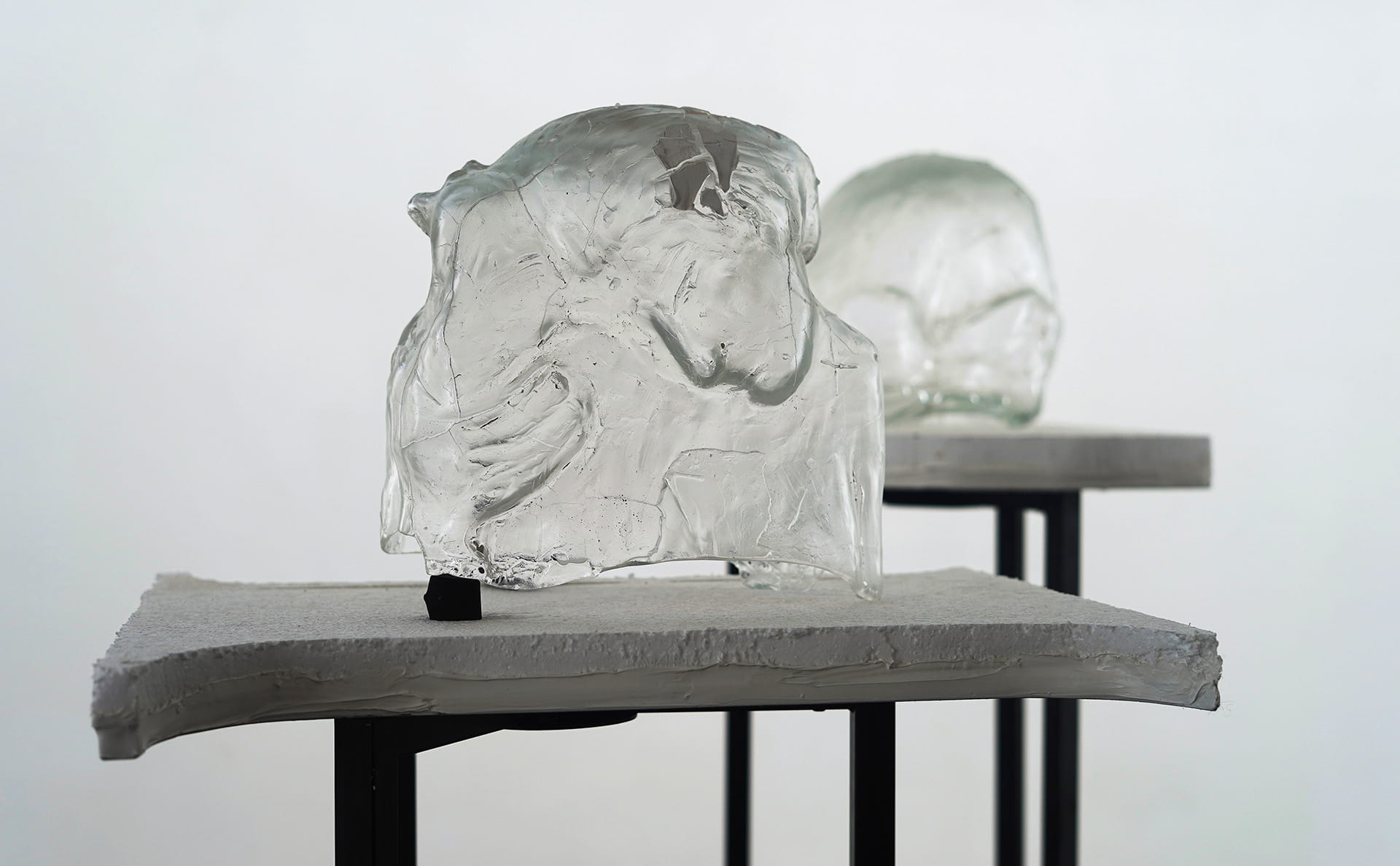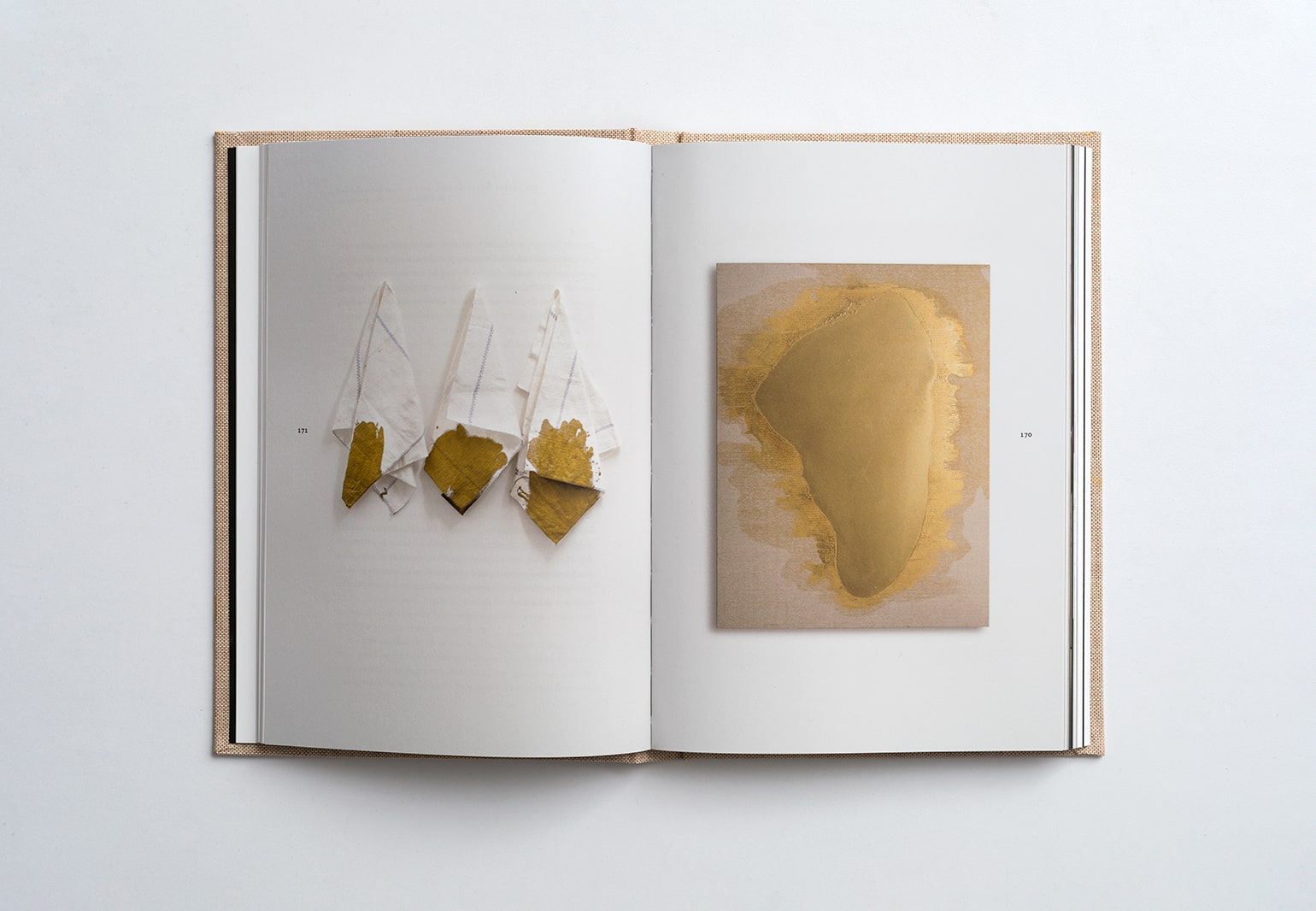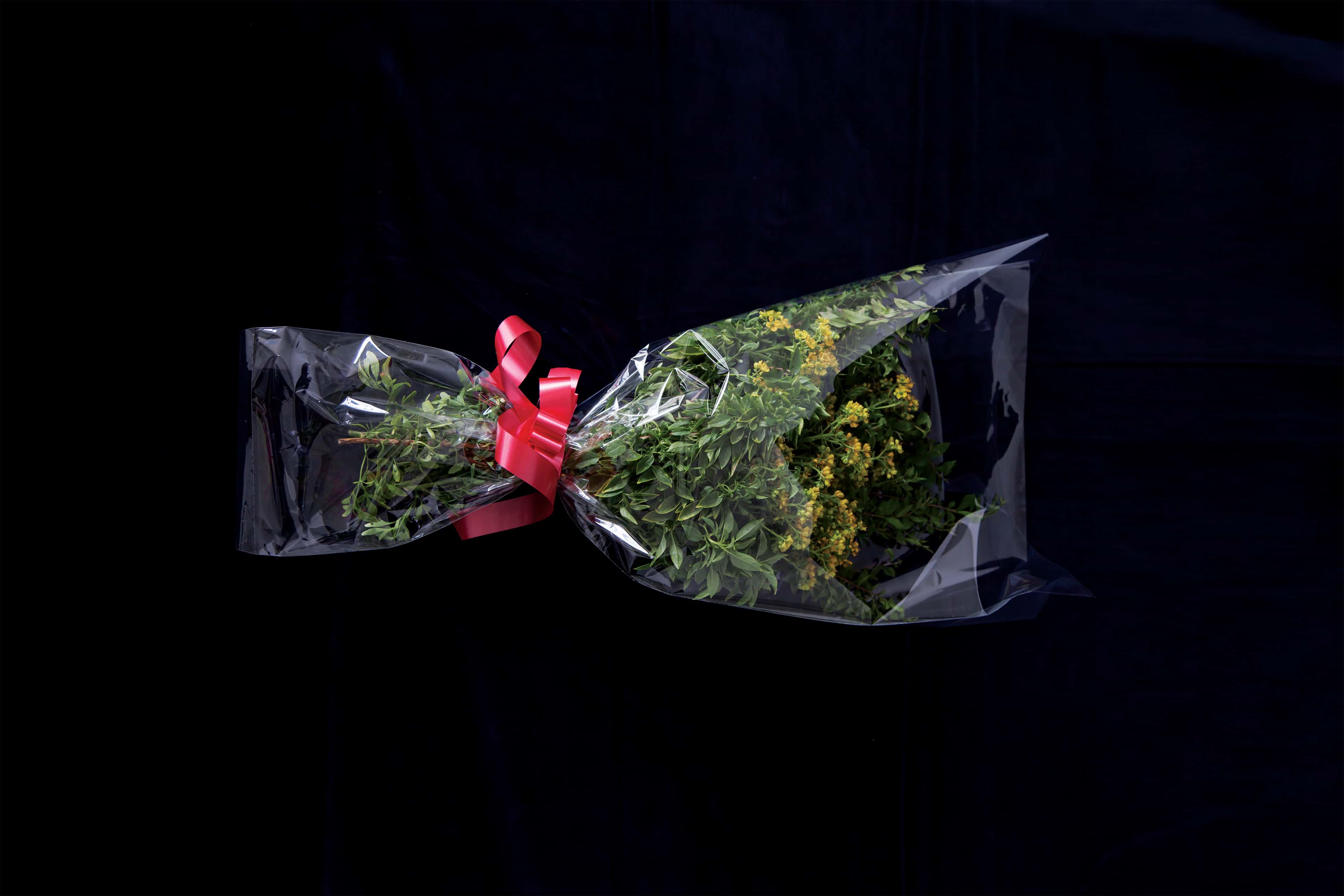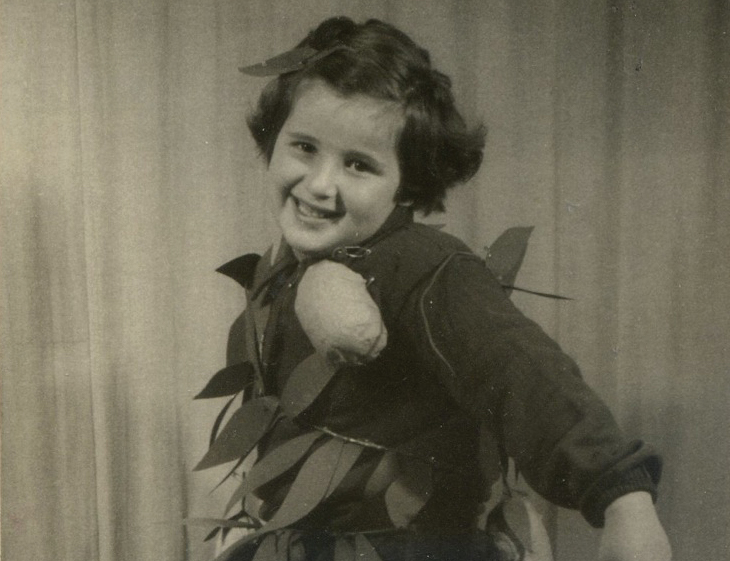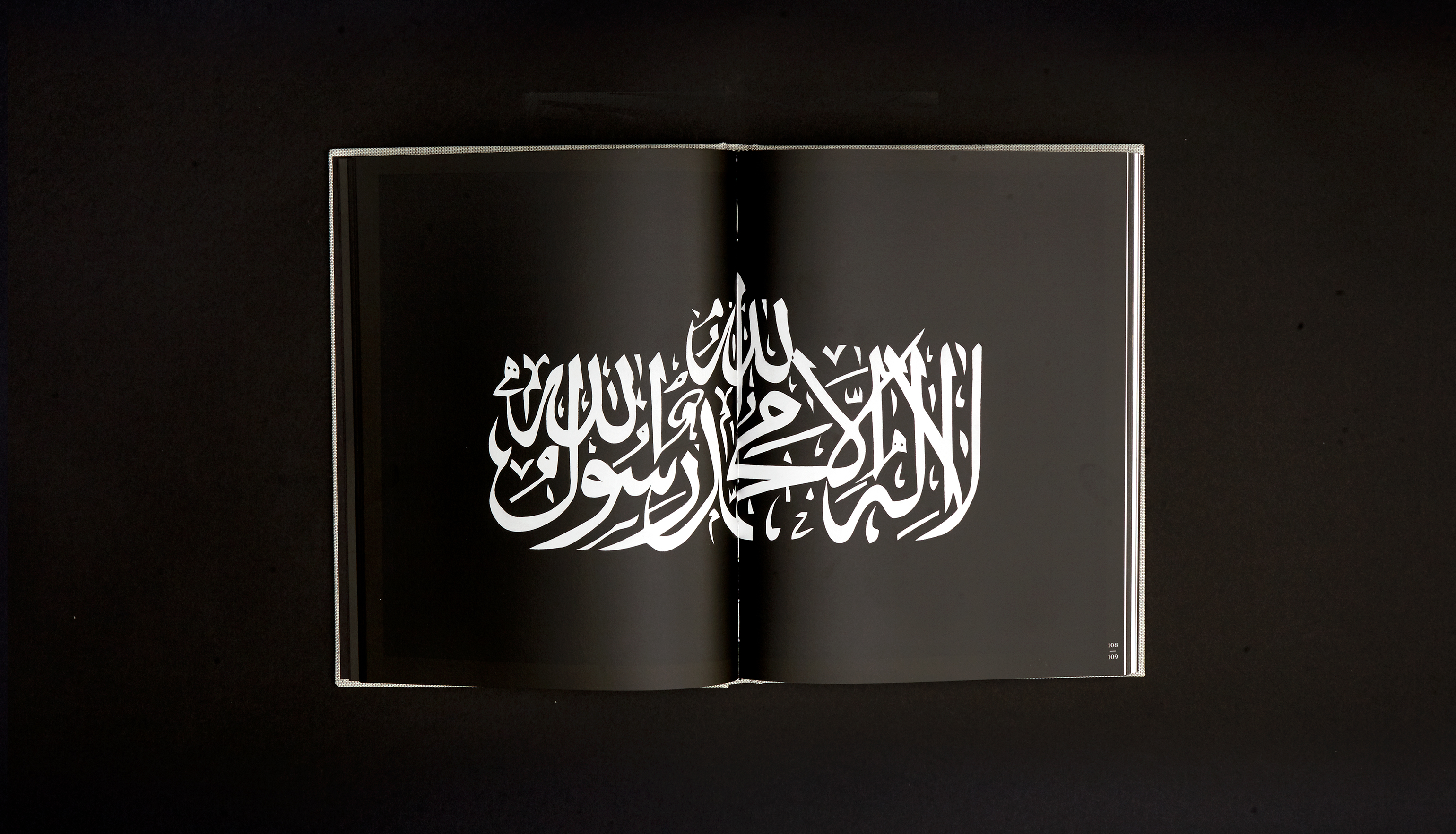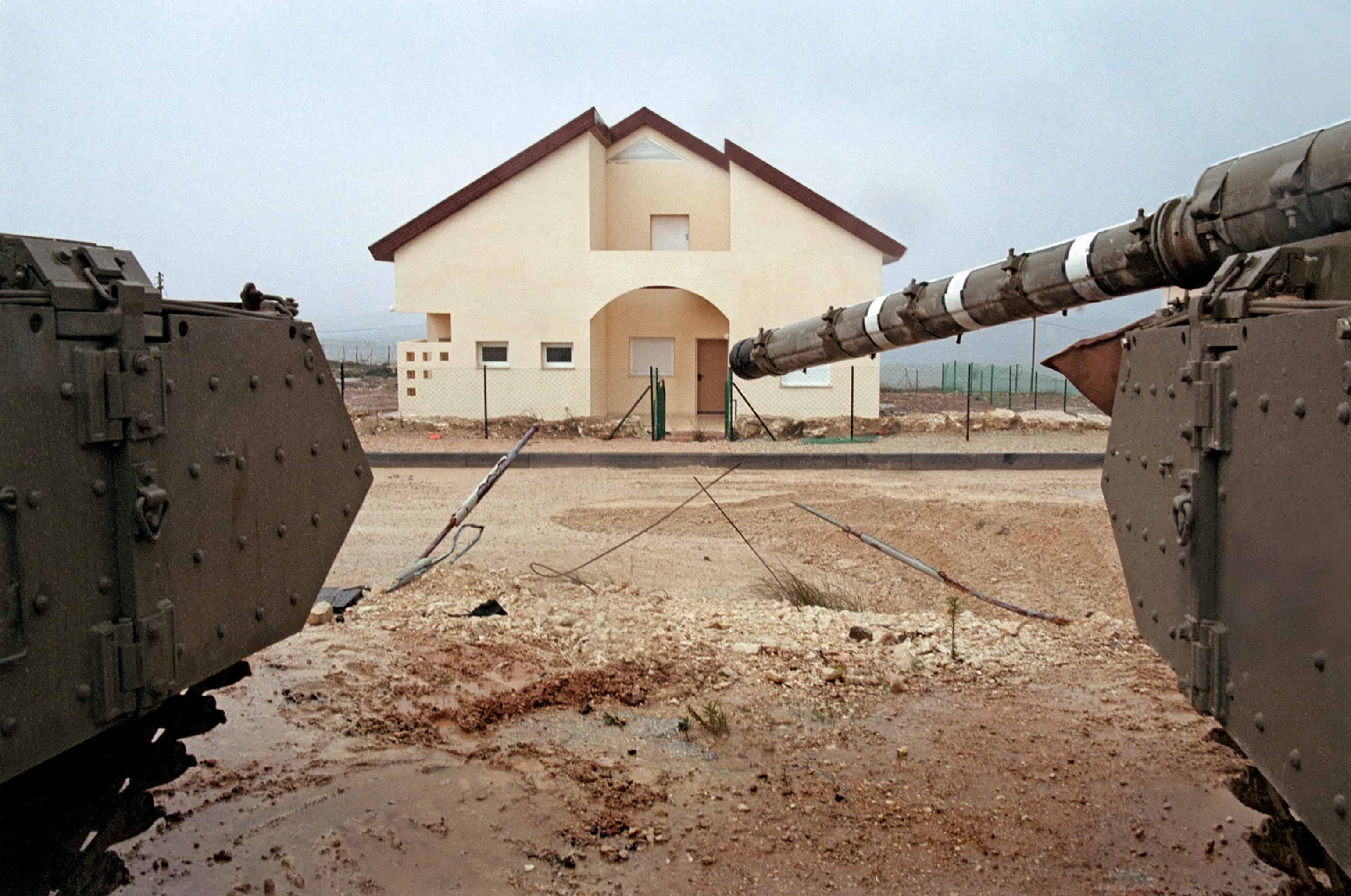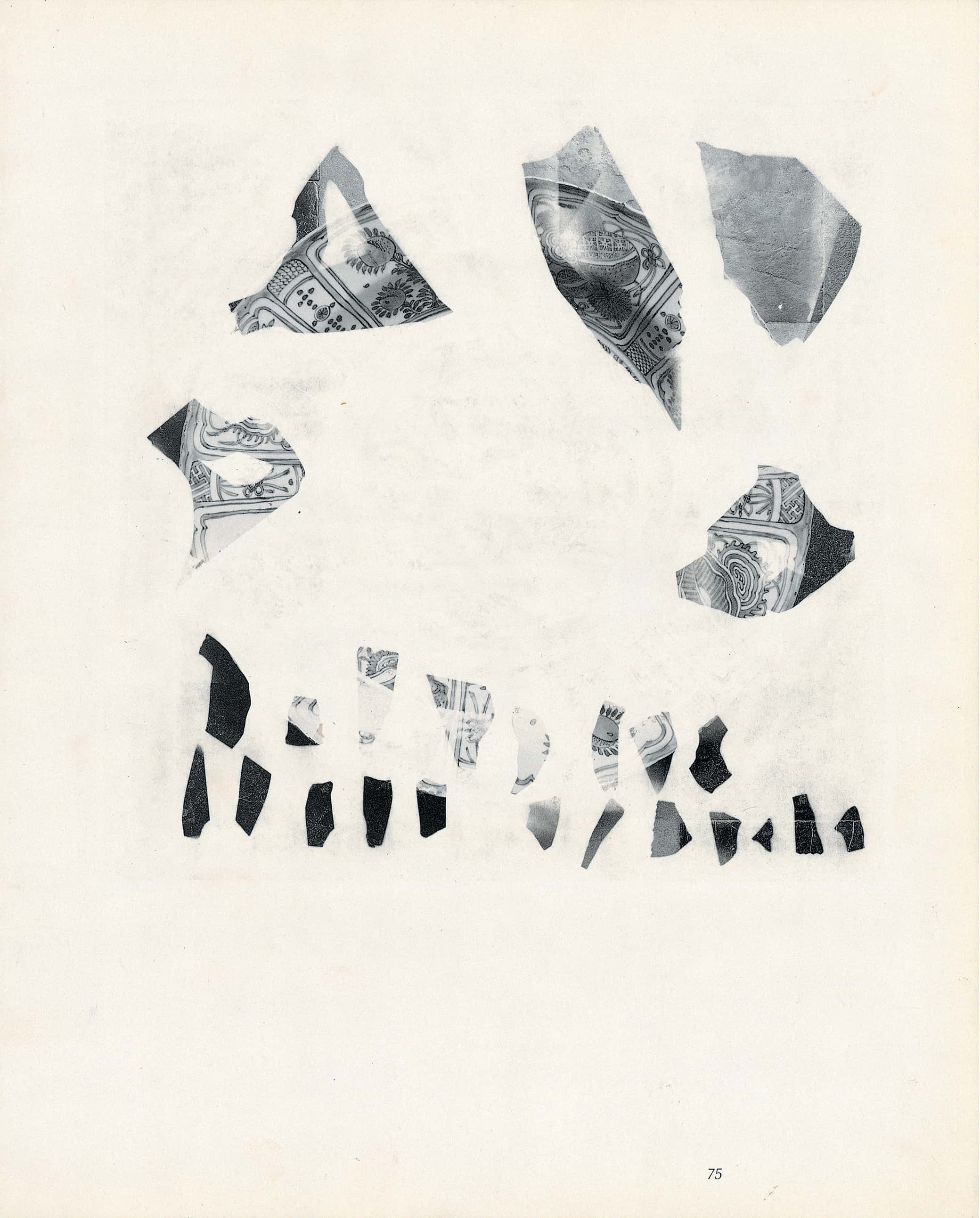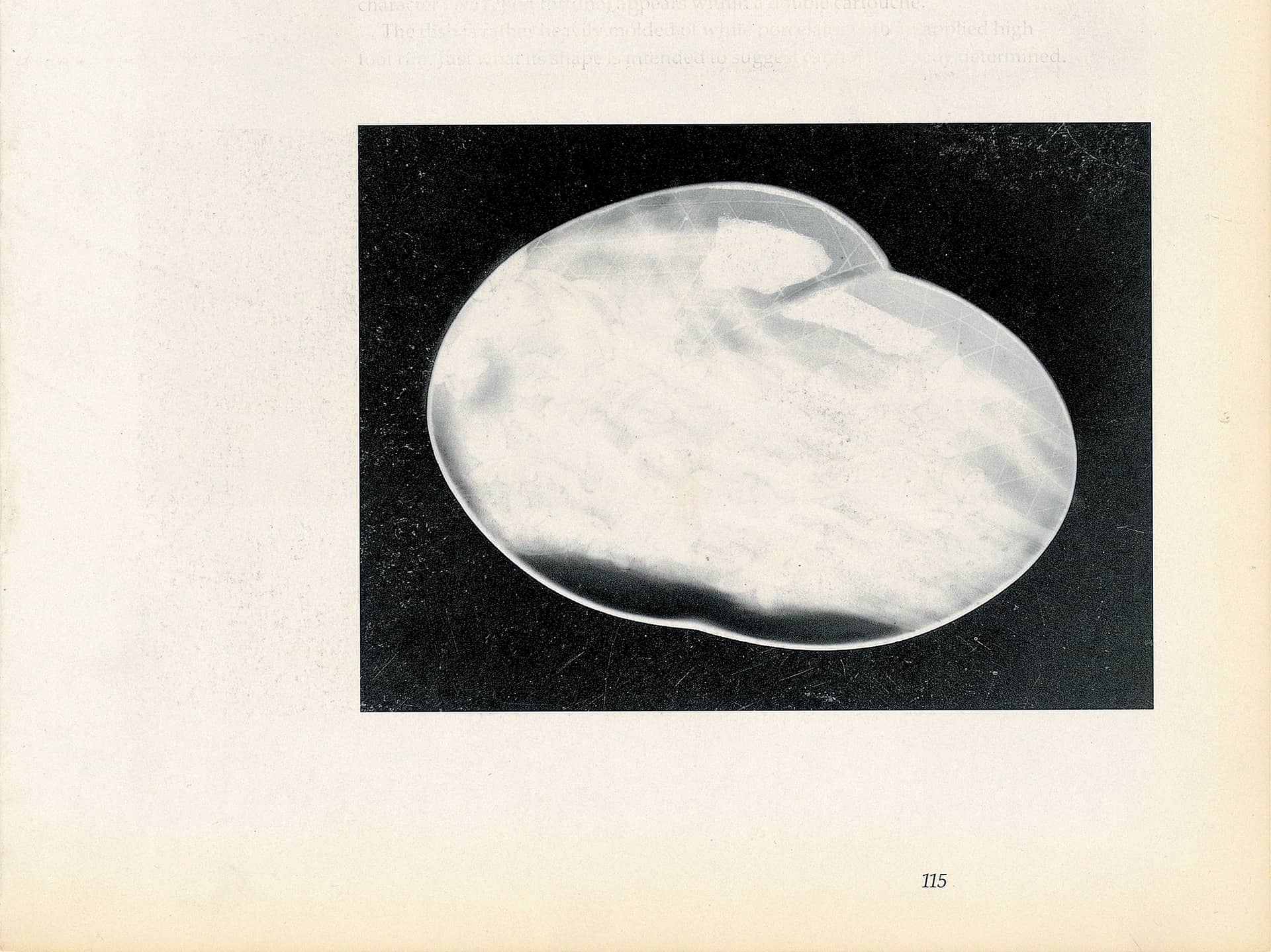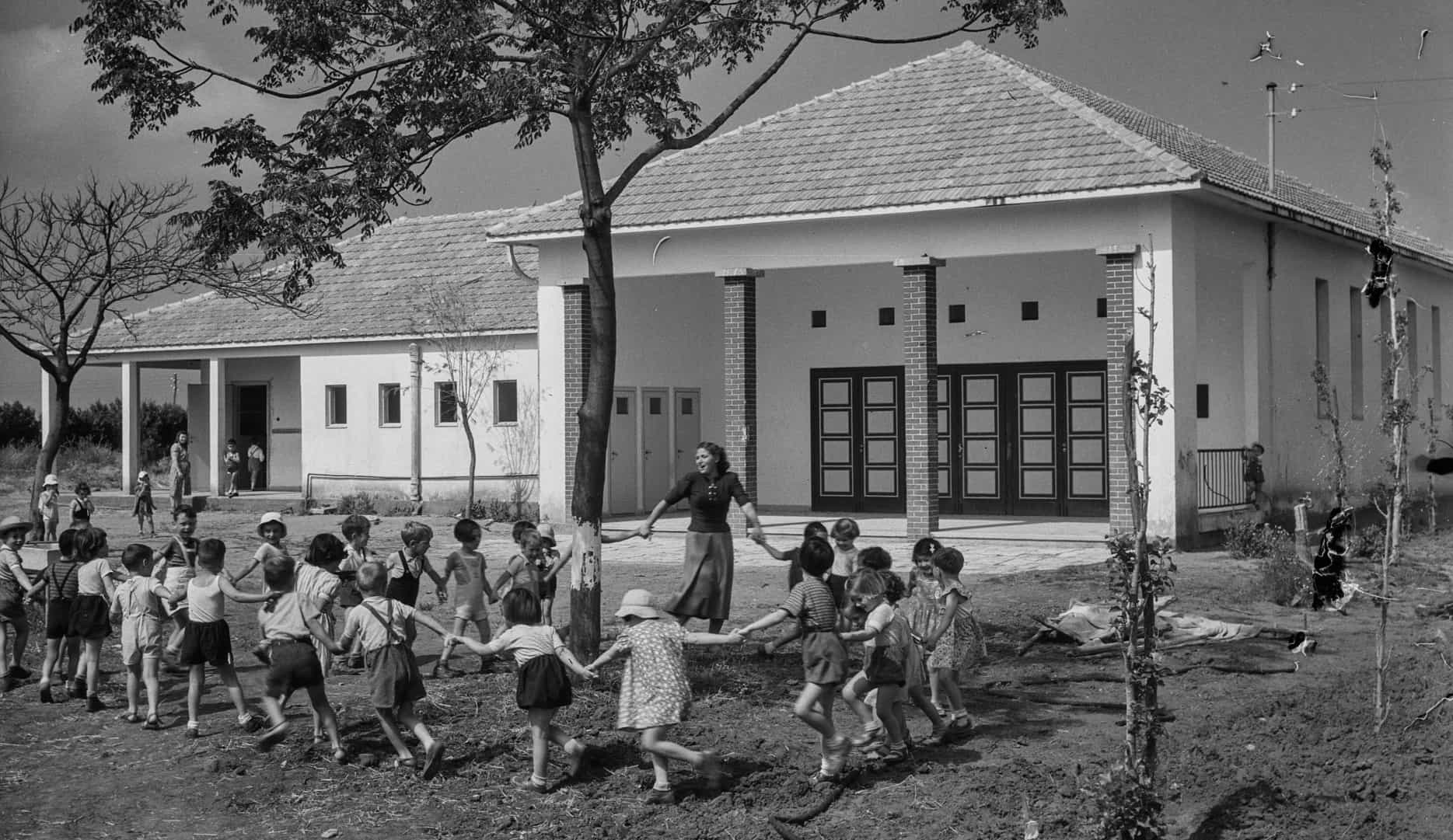-
Part I
Our world is the last of all worlds. A base world of fragments and husks¹. Abundance came down from above, lights were poured from vessel to vessel, but the vessels could not contain the intensity, and they shattered to pieces. Lest we forget, our role is to wander amongst the heaps, and seek out the sparks, return the light to its place. Returning a thing to its point of origin is no simple undertaking, even more so when it had none to begin with; the primordial intensities could not be contained in the first place, and the world was created in fracture. Hence, the healing process does not involve returning the elements to their original place, but rather dictates the creation of a new space, where the disparate elements can rest.
If you look at Hillel Roman’s face, you will notice that his hairline comes to a V-shaped point at the center of his forehead. This same V appears in the hairline of the Squirrel Monkey. The monkey stands on all fours, his back is arched, his tail forms a circle behind him, as if outlining his figure. The monkey contains himself. His head looks strange; at a second glance it looks like an alien’s skull. Underneath the widow’s peak, where his hairline ends, there are two black holes instead of eyes. Hold your gaze a little longer and you will hear the charcoal speak. It is the V on the artist’s forehead who chose this specific monkey, because of its own V. Perhaps this wasn’t a conscious decision, but it would suffice to place the two skulls facing one another to notice that we all choose from within our own holes.
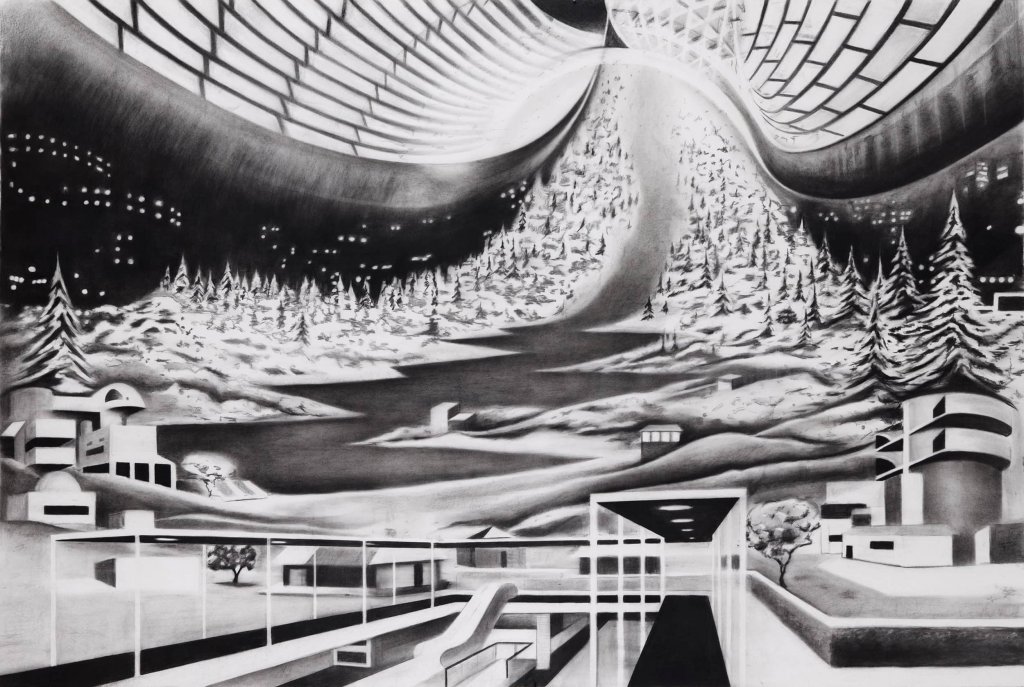
Hillel Roman sits exiled in Tel Aviv² mining images from the internet, transforming them back into matter. His process is an act of translation where pixels become grains of charcoal, and the images found within the boundless expanses of the net are redeemed to become originary. The drawing creates a place for the image, and so it returns to the world. A charcoal world. Ripped from its context, the image floats within blackness. The absence of a background denies the possibility of an exterior light source; the light emanates from within. This is none other than the internal luminance of the screen – the lost aura of painting is found flickering in the phosphorus light of the computer screen. Every detail in the drawing is precisely depicted, the pronounced sharpness renders it, upon a second glance, hollow. The drawing follows the illusion of the perfect object to its endpoint – just to watch it collapse. This is an image deprived of depth, yet not entirely flattened. It is impossible to enter, but it also doesn’t come out towards the viewer, it remains flickering in its own here-not-here, in its own there-not-there. The internet is an infinite source of images with no clear outlines. It is a sentient organism, shifting and multiplying by the power of reason, a power it shares with cob webs, urban infrastructure and pipelines, a power which allows the fingers to type whichever word comes to mind – cast a word and a picture will arise. The old fashioned system of letters and words is still the safest way to navigate this universe. The web is made up of pictures and words; it doesn’t just proclaim the demise of the photographic image and the written word, it is also a place where one can kill time, do nothing, stare, drift, or simply be without purpose. The internet is a language in the making, a streaming-consciousness seeking- what, which brings us to the nature of the search. Roman wanders the net, but what does he seek?
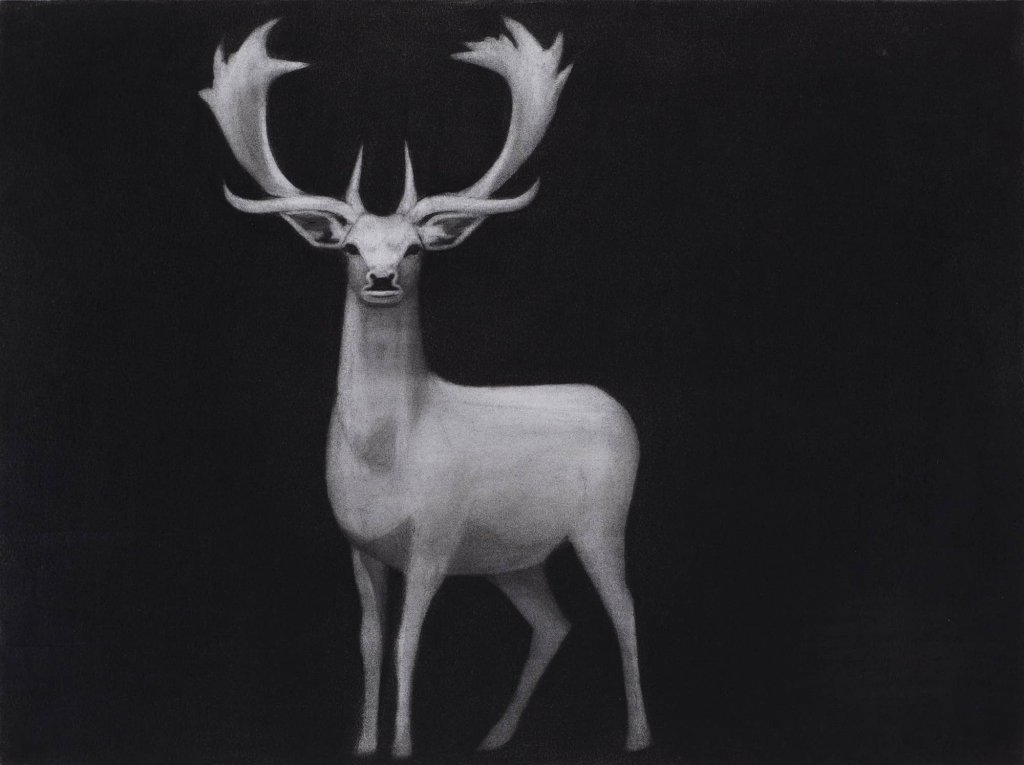
-
Part II
The body of work presented before us is a radical dictionary. Contrary to image banks offering infinite variations on the same subject, it makes one singular choice: A General Rectification³. The human eye is bombarded day and night, violent battles cover every vacant inch of the skull. Roman rummages through heaps of images and picks out a single object. The drawing, like the act of naming a thing, rips the object and frames it; the drawing’s rectangular contour echoes the defining power of the written word. The wrested object is then displayed, pretending to be a well-defined concept: this is what a wetsuit looks like, this a parliament building, this is an elephant, here is the earth, and this is a fort. The concept presents itself as an ideal, it aspires to cast its sovereignty over the rest of the instances falling under it, the monkey seeks to represent all monkeys, the shark to embody all sharks.
This is a violent display of spectacle, an extravaganza of order intoxicated by power. This is the tyranny of the organizing faculty, cutting and pasting, shedding light and casting shade, placing and determining the proper shape for each and every object.
The drawings feign to be precise, to cut exactly to measure.The sharp V’s⁴ epitomize precision, and in many of the works it is the very point where the drawing undermines itself. The V is so sharp it destroys the image, and returns to be a free flying line.
Time and again the pointed V recurs because the pointed tip is the meeting point between the world and the drawing. The pointy skyscrapers and the peaks of the revenue graphs are one and the same. The pointed edge locates and articulates the moment of transformation from a three dimensional world to a two-dimensional one; the V translates the natural cycles into the graphic order. The shark’s tail cuts through water, the drone’s tail cuts through the sky, both are conveyed by the charred tip.
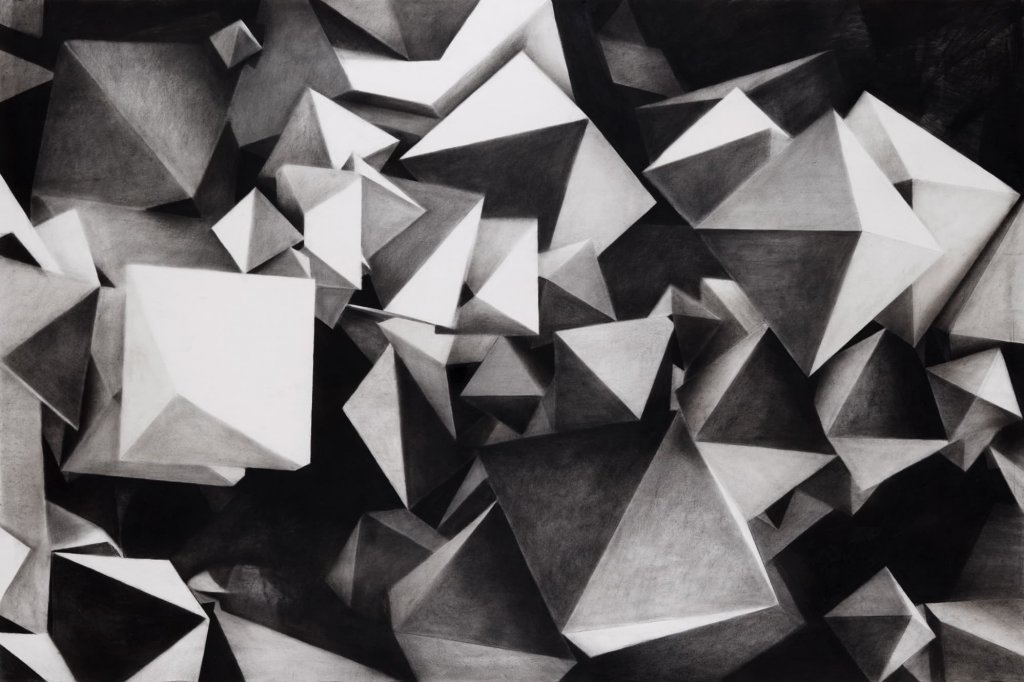
The continents in the Universal logo drawings, are strewn like gigantic steaks on the face of the earth. The corporate logo’s letters enter the drawing from the right, baptizing the globe with a name, the sharp edges of the letter N shine like a knife. The word “World” collects the multitude of phenomena and wraps them together in one efficient, easy to send, word. Once the letters enter Roman’s drawings, they all become letters in themselves. The body of work becomes a text begging to be read. These are not arbitrary signs, but rather marks written down, cast to the ether, waves locked in shapes, the shape of a letter. For he who wants to appear needs a container, something to hold him before he disperses forever. Each letter a locked wave. The light must be drawn.
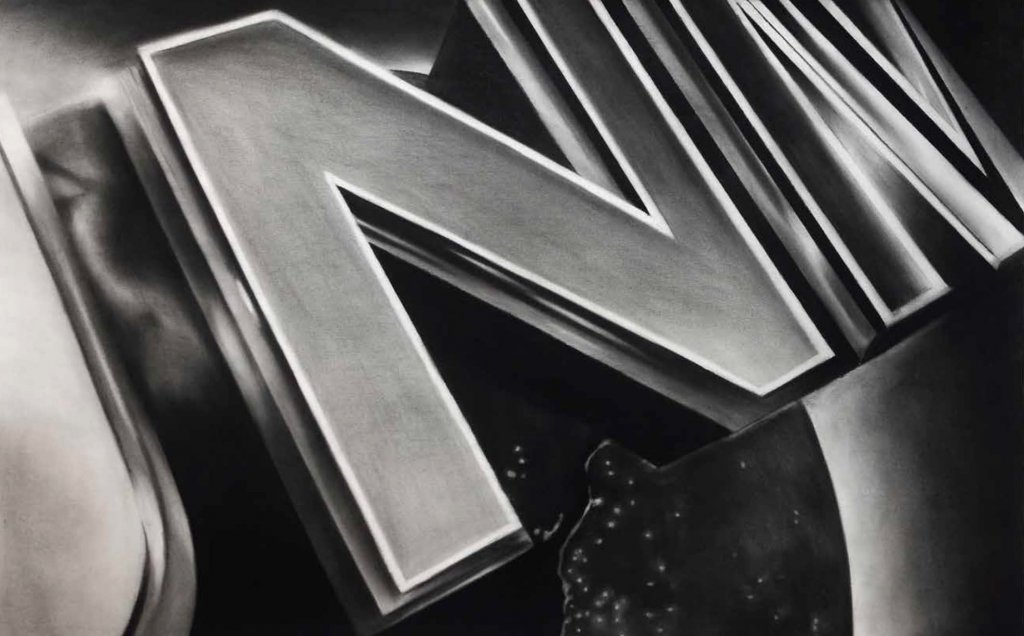
-
Part III
The web has a sleek tongue. The charcoal’s tongue is heavy and old, and it says: Grain upon grain. In the space between the pixel and the grain lies the story of humanity. What kind of world is composed here? What do these collected articles share, what is the character of the civilization holding these lexical values? There are two possible scenarios; in the first reading the world has burnt down, Roman holds a piece of charcoal in his hand and recollects memories. In a second reading we are all still here, and Roman warns of what’s to come and traces an alternative path. Charcoal is a material on the brink of extinction, and so there is no material more adequate to speak about existence and oblivion. If this is the story of a civilization which has passed from this world, one must read the signs written down and seek the signals of perdition. But if this is an attempt to rectify, one must assemble the signs in the proper order and pray.
Roman describes the drone as such: “Its vision has been erased, a camera installed instead, it has no windows and no doors, it is a sealed capsule on its way to kill someone, an epitome of technological prowess, but also of its horrific potential. Yet there’s something divine about its appearance. Just like Universal’s gleaming logo letters, appearing from the darkness in a circular motion that wraps the world, unifying it, just like the descriptions from the end of days, where everyone assembles in Jerusalem, to worship one god, in one language, there is no god but Allah. This is the essence of monotheism – but I don’t believe in god.”
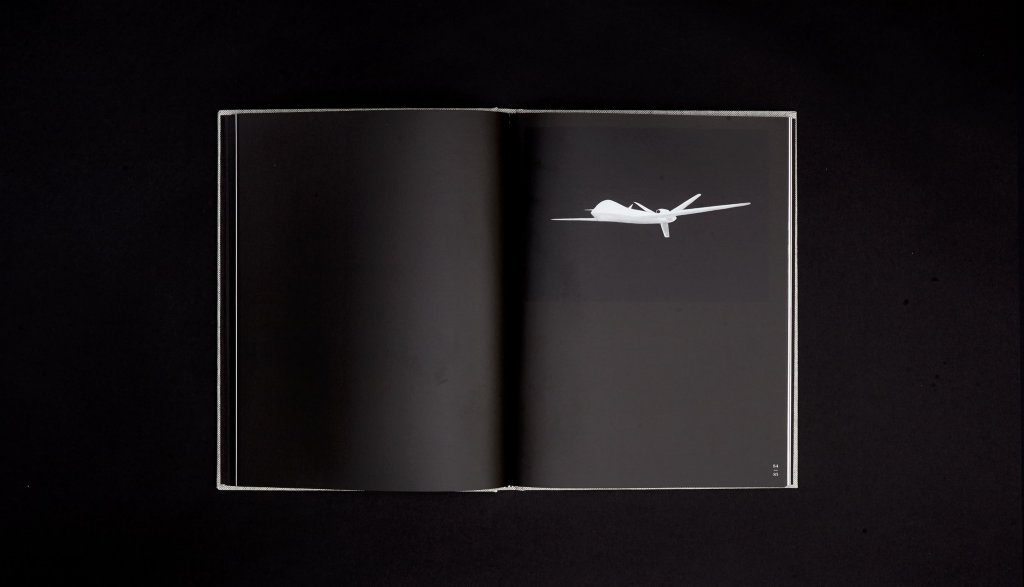
The serpent’s tongue is split, the V points into its mouth which says: “Ye shall not surely die”⁵ , wrapping together negation and death, squirming, denying the word of the Lord…Negation is a lingual creature, it has no existence amongst things. Negation is invisible, only the split can be represented. This is where alienation starts, a removal from things. Children’s drawings begin with repetitive cyclical motions, without form, and void, holy scribbles. The first sign of control in the drawing is embodied in the cut of the straight line. Creating a shape means sectioning space, separating here from there. This is a house and this is the roof. But the V is also the way things meet. What is a V? The convergence of lines, the separation of lines, a meeting point, a vanishing point. If the world was created in fracture, the V is a fracture turned into a letter. Thus, in order to read the letters and the assembled message, one must follow the V’s.
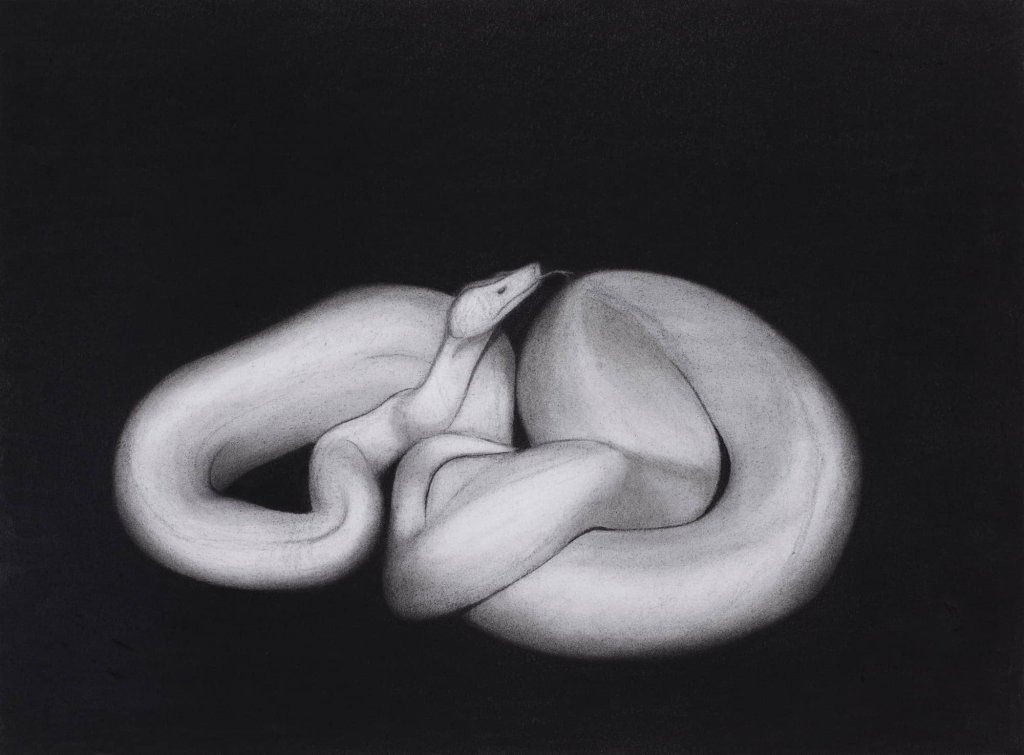
A tip is the shape which enables a thing to end without crumbling. It is a point of concentrated power, it is how a sprout cuts through a clod and peeks out onto the face of the earth. The tip is the most pronounced form of power. This is how financial inequality is represented – a narrowing pyramid, where most of the power is concentrated high in the apex.
A sail ship made of blocks embodies the idea of sailing, of a game, the possibility of building, the notion that another place does in fact exist… The sail is triangular, but why? The moment of force applied to the tip of the mast is great. If the same force was applied to the tip and the base, the mast would break, and if it didn’t break the boat would surely capsize. So the sail must be reduced as it grows taller. The power gradually spreads downwards from its peak, where the tip of the sail meets the tip of the mast, to form another V. The sail’s contour visually embodies exponential decay, fast decay slows down to a stable state.
It is much more exciting to think of exponential growth – something that starts growing slowly and then, all of a sudden, surges. This is a geometric progression which multiplies itself with every step: at first the growth is slow – from two to four, from four to eight, but as the numbers grow, the multiplication becomes more dramatic. Take for example humanity’s growth rate. It took tens of thousands of years until in 1850 the earth’s population reached one billion, but in 1950 it had already reached 2.5 billion, and in 2000 about 7 billion. In The Crash Course, Chris Martenson draws a few similar exponential graphs charting the population growth, petrol consumption, money supply, the extinction of species, water consumption, deforestation and the exploitation of fishing resources. All of these are rapidly accelerating and are of course interdependent. The same is true for the cell splitting of the embryo, the growth of the internet and the reproduction of viruses.
Exponential decay is the reciprocal process; the structure of pension plans runs parallel to the distribution of deaths in the years following retirement – the older you get the less you get paid, until the decay is stopped and you receive a constant amount until the end of your life. Radioactive materials and beer foam also decay exponentially. The power loses its power to drop. Imagine a heavy object in freefall – if during the fall its mass were to consume itself, at some point the object would levitate… In the Waterfall drawing, a closer inspection would have had to represent all the gushing and the splashing, the plunging of the water and the purl of the cascade. The distant perspective depicts things in approximation, in abstraction, revealing the contour of the phenomena’s decay; the water crashes down like a pillar of light or a tree trunk, and then it is cut, this is the way the one splits and separates into many. An earlier painting closely observes the way water breaks, the wave curls and closes in on itself, from afar it resembles a perfect tongue, but up close one can see the individual splashes of water. The careful placing of each shard within the whole picture is a patient work of reparation (Tikun). Here the V is also the splash, and the tiny shards separate from the wave and take off like white birds. The graphic notation of a bird is composed of two arcs which converge and create a V. The fish’s tail and the tail of the drone are also made of two converging segments; the V cuts through the air and sea, this parting is what allows the motion to be steered.
-
Part IV
Five Japanese women are all smiling towards the camera. The smile, the inner corner of the eye, the point where the arm meets the shoulder, all trace the same V. This is the way things meet. The nose of the armadillo is sharp so he can shove it inside ants’ nests, but why is his tail so sharp?
If indeed what is charted here is something other than catastrophe, it would reveal itself through the resemblance between disparate things. The black and white drawing does away with some detail, turning the objects into geometric forms; spheres, cubes and pyramids expose the formal logic of the world. The objects stand next to each other in a proximity which allows their similarities to show, and yet, their separateness is not disturbed. The resemblance does not facilitate governance.
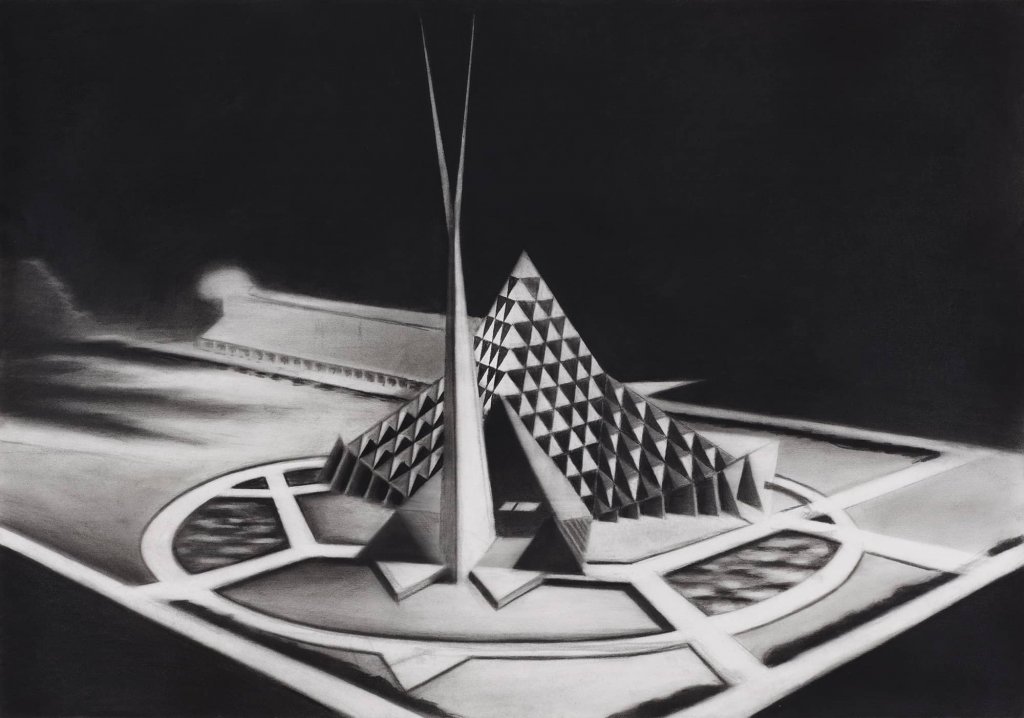
The animals on Noah’s ark were paired, but here we are presented with a new world order – only one of each, organic reproduction will not ensue. Yet, the drawing shows that no one really stands alone. The same basic shapes in the same black and white. The microorganism (non-random form#1) looks like a knight’s helmet, but also of like the Star Fort structure. The shape of the fort follows that of a star. The structure’s form allows the defenders to attack any foe trying to climb the wall. In a square citadel the wall itself can actually serve to protect the attacking forces, whereas the star shape exposes the exterior part of the wall to attacks from within. At the same time this star shape resonates as a utopian structure.
Manmade structures imitate natural ones, but they also reflect the internal structures of the mind. The mind and nature share the same organizing faculty; the rules which govern structures and networks are the same rules that govern our mind. This is what arises from observing Roman’s work, and so the prisonhouse of our mind is broken; we do not impose the arbitrary categories of our mind upon an alien external world, our mind is a part of nature. Our consciousness is not separate from the objects, both were created according to the same laws. Hence there is harmony, a charcoal one, but still – a harmony.
Without a head and with no hands the wetsuit stands, full of wind, like a medieval knight’s armor on display. Who knoweth the spirit of man that goeth upward, and the spirit of the beast that goeth downward⁶ . The surfer’s body shall enter this space. Who creates the waves in the sea? The wind or the undercurrents?
The raft carries occasional goods, triangular things and squareones are easier to pack, they take up less space. Things are round as they come out of the hole, you have to smack them here and there, and then they’ll fit in perfectly. The house is rectangular the door is a rectangle the window a rectangle, the floor is covered with rectangular tiles, on a rectangular wall hangs a black rectangle on which are drawn: white yogurt, white milk and white butter, and nothing seems to drip. “The world is hard and pure and white… as though the sun fell on shards of ice⁷.
Oddly enough, it is the spikes on the Father’s crown which are cut off. The father’s nose is the bigger tip, pointing downward towards the glittering sparkles in his beard, and in fact even lower than that. The scorpion is here to sting, cut and pinch, he moves swiftly like an arrow shot into the world. The Archaeological Museum of Palestine looks like a utopian model, or a deserted space station. All of these images are verse fragments, cut from different sources. They are assembled here, liberated from their contexts, free to transcend to a higher level of being. This a story about a reality in which every detail contains the totality, and is also contained by it.
-
Part V
But what’s the connection between the scorpion’s sting and the armpit of a Japanese girl? Narcissism is the source of danger here – that unrestrained selflove – which causes man to cast his reflection onto the world and by doing so, to hide the world from himself by himself. How great the temptation to compare between a between a sprout and a tower, between a sail and a waterfall. The world was created in fracture, the tip is a fragment from the big bang, and it appears for example like this:
A monkey’s forehead
A non-random form
A slant of an eye
A snake’s tongue
A deer’s horn
A tip of a star
A drone’s tail
A shark’s tail
A waterfall
A letter
A nose
A sail
The tip is the way things start, and the way things end, the way things split, and the way things are cut off, the tip is the shape of the slash and also the shape of the blade, but we cannot let it all rest on one single rule. The tower, lest we forget, did not stand. The power is concentrated at the tip, yet the tip is blind. The tip’s movement amongst shapes and things is based on arbitrary exchanges, there is no single rule which can govern all tips.’
The movement through time is bound with the swapping of meaning for meaning, of word for word, the exchange of goods and images. This is why this wandering through the image bank conceals within it an acknowledgment of the transience of life itself. The self is reflected here as an exchangeable article, moving through time, passing through reflections until he himself would pass away. This is the networked subject, like the underwater micro-organism, which first appeared under the eye of the microscope, a body with neither inside nor outside, composed entirely of a lattice of passageways.
Arbitrariness is an insult, WE WANT PERMANENCE! But that which is permanent is that which dead, just like the image cropped into the frame –“…it is death that digs the jagged line of demarcation between physis and meaning most deeply.”⁸
The sharp smile of the Japanese girls, is also the meeting point of the charcoal and the paper. This is how blackness touches the white surface, leaving upon it the trace of pressure. This is how the first writing, the ancient cuneiform, marks a form in clay. It is this form, this trace, this pierce of alienation which is the origin of every dialogue in matter. The horns of the buck were made for courting wars, one pointed tip wins a battle so another pointed tip would celebrate its victory. The elephant’s tusks are used for digging for water, salt and roots; debarking or marking trees, for moving trees and branches when clearing a path, and for protection.
Each of us carries the Iranian parliament within him – a large space containing many circles assembled around a focal point. This is our face book, here are our less-familiar acquaintances, here our acquaintances, and here are our friends, and in the center stands the self, speaking. At the center of the parliament two tips converge, all the lines meet at the center-stage, the aisle leading to the stage forms a pointing at the speaker, and over him a V opens up towards the sky and on to eternity.
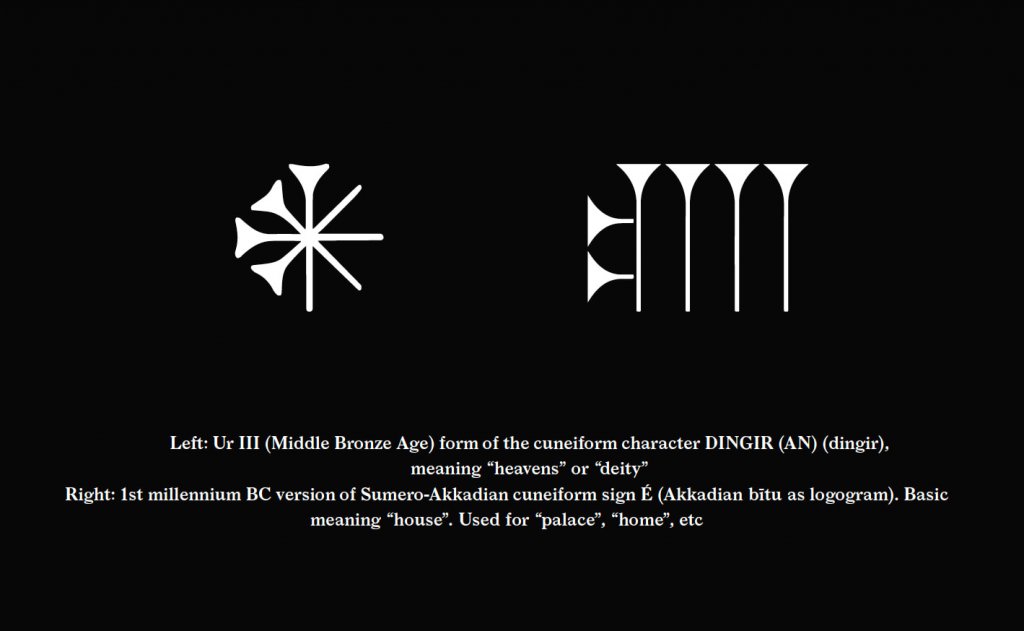
In the Chapel drawing, in front of the tabernacle stands an obelisk which also forms the shape of an X. Unlike the tip, which cuts in order to create a form, the lines of the X meet and continue onwards. This is why the X signifies the annulment of the individual, leading to a total anonymity; the fracture line of self-dissolution, from which prayer can open. This is a human figure, standing with two legs spread apart, raising its arms to the heavens.
The X is the meeting point of two lines in the web, the web in which every entity contains the reflection of all others, the X is the meeting point of the two verses:
I am but a worm. For me the world was formed. The world was made for me. Though I am just a flee. The eye is a rat running round the net, you can’t catch the net, better heal they eye. The portrait of the sick eye is the portrait of the dusty ball – the vision is blurred.
Just Phooo, and watch the tiny spheres floating in a beam of light. Teach the eye to see what’s there for it is all you have. Blessed is he who learns to see for he has learned to love.
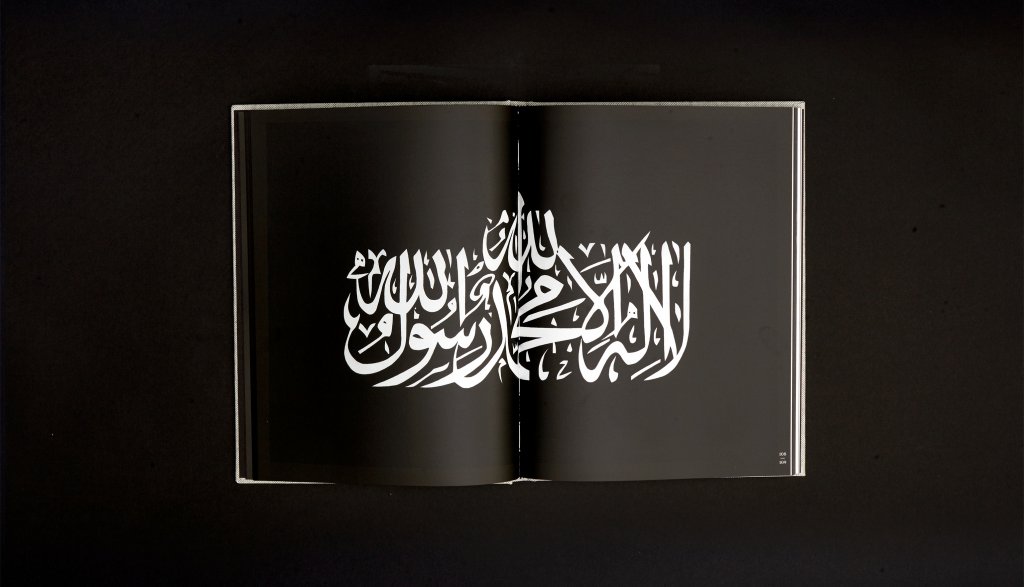
Venice Biennale For Architecture, Artis, The Jack Shainman Gallery, Printed Matter Art Book Fair, Alon Segev Gallery, Chelouche Gallery, Braverman Gallery, UMapped.
